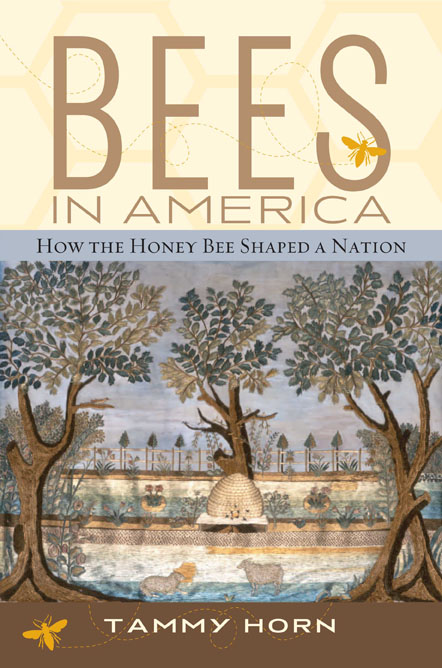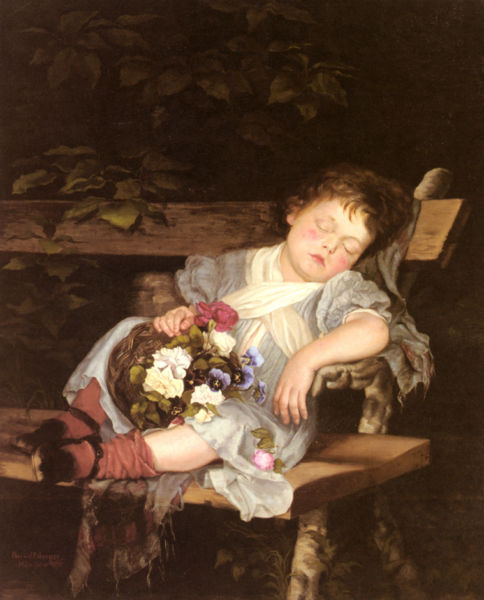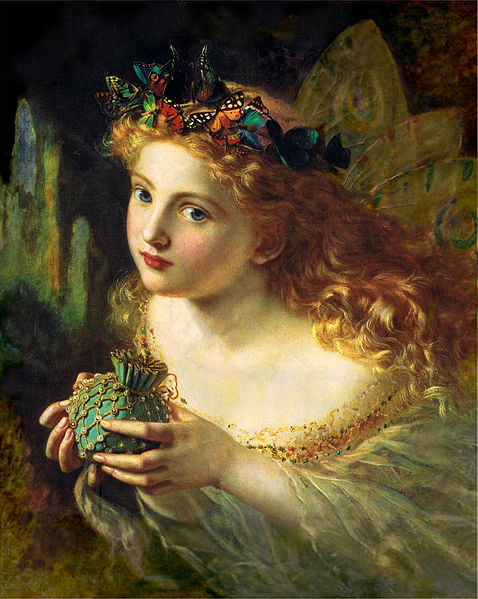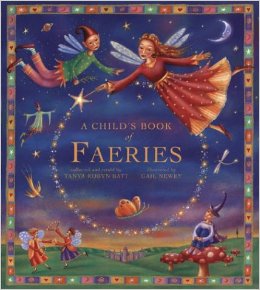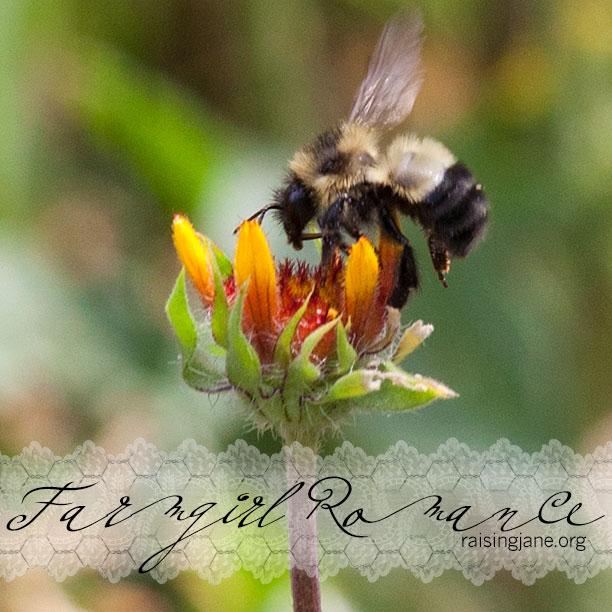Keepers of bees, lend an ear …
I stumbled upon a curious old custom:
The Telling of the Bees.
Ever heard of it?
It’s new to me, but its roots can be traced deep into the lore of 19th century England and followed to the shores of America on the ships of early immigrants.
“Telling the bees” referred to a tradition of humans informing hive residents about important events in their keepers’ lives, such as births, marriages, or notable comings and goings of the household. Perhaps recalling the events of the year at the start of a new year?
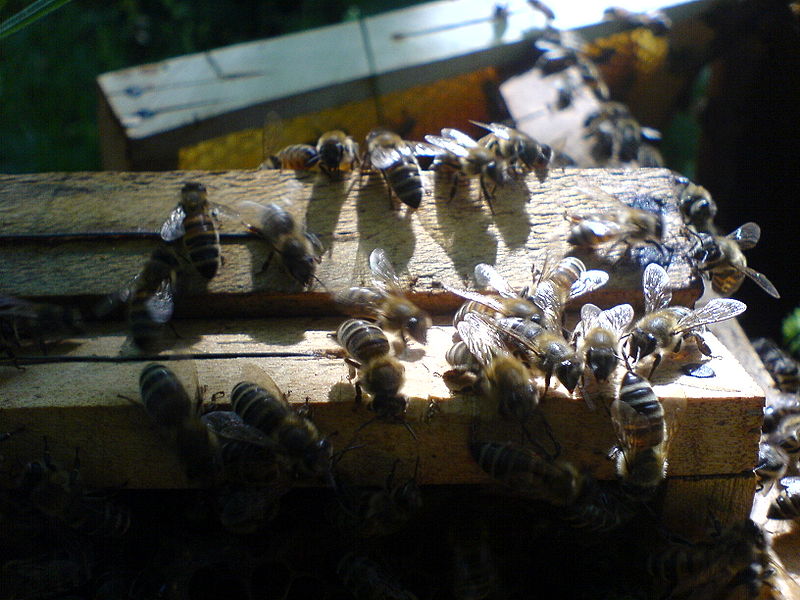
Photo by Pokrajac via Wikimedia Commons
Most importantly, though, people believed that bees must be told of their keepers’ deaths. If left out of the loop, the bees might abandon their hives, halt honey production, or even die themselves.
So, how would one announce such news to an apiary?
If the keeper had information to share, she might rap gently upon the hive and murmur softly to her bees. A bit of lace and slice of cake might be left to include the bees in a wedding celebration.
But if the sad news of a keeper’s passing was in order, the bearer was inclined to drape a hive in black cloth while humming a “doleful tune,” according to New England Legends and Folk Lore by Samuel Adams Drake. Funeral food and wine would be “shared” with the bees, and an invitation to the funeral tacked to the hive. In some cases, the hive might even be rotated to face the funeral procession. It was considered critical that these valuable members of a household not be neglected.
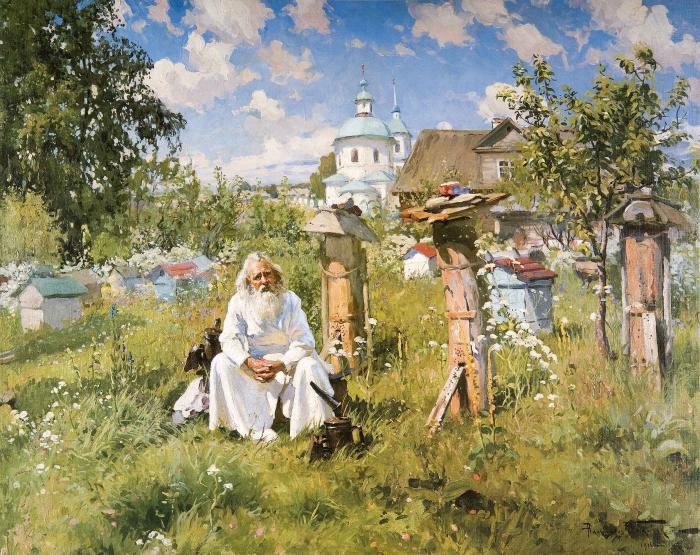
On an Apiary by Aleksandr Makovsky via Wikimedia Commons
In 1858, American Quaker poet John Greenleaf Whittier published “Telling the Bees” in the Atlantic Monthly. In his introductory note, he wrote, “A remarkable custom, brought from the Old Country, formerly prevailed in the rural districts of New England. On the death of a member of the family, the bees were at once informed of the event, and their hives dressed in mourning. This ceremonial was supposed to be necessary to prevent the swarms from leaving their hives and seeking a new home.”
Here are a few stanzas from Whittier’s touching poem:
Just the same as a month before,—
The house and the trees,
The barn’s brown gable, the vine by the door,—
Nothing changed but the hives of bees.
Before them, under the garden wall,
Forward and back,
Went drearily singing the chore-girl small,
Draping each hive with a shred of black.
Trembling, I listened: the summer sun
Had the chill of snow;
For I knew she was telling the bees of one
Gone on the journey we all must go.
***
And the song she was singing ever since
In my ear sounds on:—
“Stay at home, pretty bees, fly not hence!
Mistress Mary is dead and gone!”
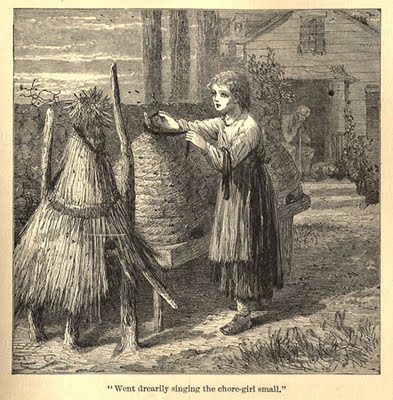
From Whittier and Whittier-Land, eds. Donald C. Freeman, John B. Pickard, Roland H. Woodwell. Courtesy of the Trustees of the Whittier Homestead, Haverhill, MA.
As I was buzzing about the Internet, I also found an English folk band called Telling the Bees. This captivating album cover was created by artist Rima Staines:
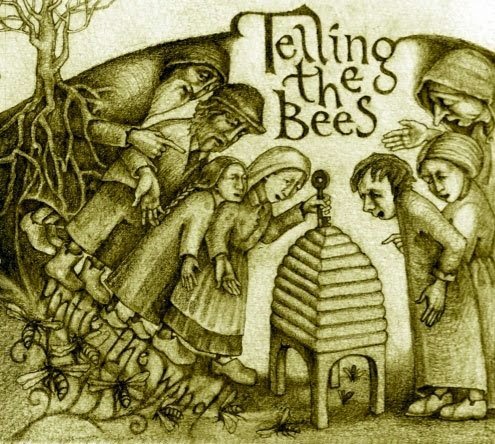
Image courtesy of Threadsofspiderwoman.blogspot.com
For more beguiling bee lore, I suggest Bees in America: How the Honey Bee Shaped a Nation by Tammy Horn.
